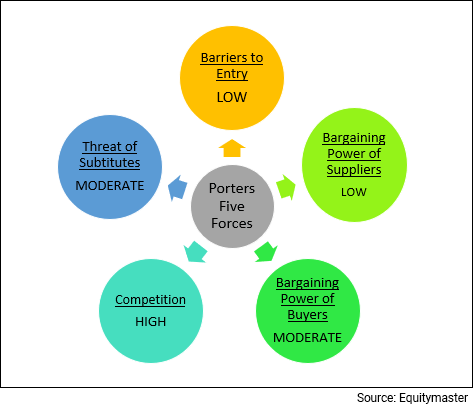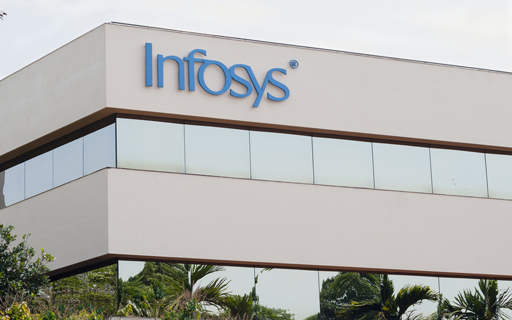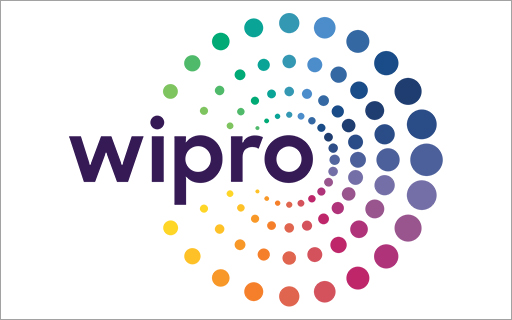India's Third Giant Leap
This Could be One of the Biggest Opportunities for Investors
- Home
- Outlook Arena
- Best IT Stocks in India
Best IT Stocks in India

The Indian IT sector is vast.
Filled with behemoths such as TCS, Infosys and Wipro, the IT industry can be divided into four main segments - IT services, Business Process Management, Software Products and Engineering Services, and Hardware.
The sector contributes 7.4% to India's GDP as of 2022 and comes with massive tailwinds. It is expected to contribute 10% to India's GDP by 2025.
Post the pandemic, the growth prospects of the sector largely changed. It can be said that the sector is at an inflection point post pandemic.
When Covid struck, work dynamics changed, and the IT sector was back with a bang. The sector was perhaps one of the few sectors whose growth had an inverse relation with the pandemic.
As the pandemic got worse, the IT sector's fortunes got better. Physical proximity became a strict no-no, and the digital world came to the rescue.
Offices, schools, banks, administrative work, everything started going online, providing a massive tailwind to the sector.
While the Covid wave has now subsided, the tech revolution across industries has just begun.
The demand for IT services has increased because of the convergence of digitalisation, automation, and the success of innumerable technology platforms and apps.
Concepts like cloud storage, IoT (Internet of things), artificial intelligence (AI), and machine learning (ML) have now come of age.
As the world becomes more connected, the role of Indian IT companies has evolved from outsourcing to becoming a partner in innovation.
While the world focuses on big tech stocks like Google, Netflix and Apple among others, keep in mind that India is not far behind on innovation and in the future, there will be a separate category of stocks filtered as India's big tech stocks.
Porter's Five Forces Analysis of the IT Sector in India
Porter's Five Forces is a model that identifies and analyzes five competitive forces that shape every industry.
These are barriers to entry, bargaining power of suppliers, bargaining power of customers, threat of substitutes and competition within the industry.
A change in any of the forces normally requires a company to re-assess the marketplace.
Let us have a look at how these five forces shape the Indian IT sector -
#1 Barriers to Entry
The most attractive segment is one in which barriers to entry are high as they restrict the threat of new entrants.
Conversely if the barriers are low, the risk of new companies venturing into a given market is high.
In the IT sector, barriers to entry are low, because the setup cost is almost negligible. However, it is high in value-added services where in-domain expertise can create a barrier.
The size of a particular company and brand-image also creates barriers to entry, as such firms have built long-term relationships with major clients.
#2 Bargaining Power of Suppliers
The bargaining power of customers is the ability of suppliers to put the firm under pressure. Suppliers may refuse to work with the firm or charge excessively high prices for unique resources.
This is low in the IT industry as a large supply of human resource is available at low cost from around the world.
#3 Bargaining Power of Customers
The bargaining power of customers is the ability of customers to put the firm under pressure. It is high if buyers have many alternatives and low if they have few choices.
In the IT sector, the bargaining power of customers is moderate.
Top IT companies in India enjoy the advantage of high switching costs. Once a client selects a particular IT company as its partner, it becomes dependent on the company for all its upgrades and technology requirements making it difficult to switch.
#4 Competition
For most industries, having an understanding of the competition is vital to successfully marketing a product.
The competition in the IT industry is high. The competition is global in nature and stretches across boundaries and geographies.
In recent years, startups have started to receive increased attention and the number of startups has also increased rapidly.
It is expected to intensify due to the attempted replication of the Indian offshoring model by MNC IT majors as well as small startups.
#5 Threat of Substitutes
A substitute product uses a different technology to try to solve the same economic need.
This is moderate for IT companies in India.
Certain countries like China, Taiwan and Korea have started to develop an environment required for growth of the IT sector. Indian companies need to innovate to have an edge over the others.
Porters Five Forces Analysis of the Banking Sector in India

When to Invest in IT Stocks
The IT sector has been one of the sectors that has driven the stock market rally in the past decade.
As revenue for the IT sector is mainly export oriented, it is largely impacted by the depreciation of the rupee versus the US dollar.
A depreciating rupee is beneficial for the IT sector and vice versa and Indian IT companies have various hedging policies that help them benefit from it.
Therefore, a good time to invest in the IT sector would be when the rupee is depreciating.
Here are some points you need to keep in mind before investing in IT stocks.
Key Points to Keep in Mind while Investing in IT Stocks in India
#1 USD/INR Exchange Rate
As revenue for the IT sector is mainly export oriented, it is largely impacted by the value of the rupee versus the US dollar.
A depreciating rupee is beneficial for the IT sector as most IT companies earn their revenue in US dollars and vice versa.
A weak rupee increases the net asset position in rupee terms for Indian IT companies. This strengthens their balance sheet.
However, the fall or rise in the rupee tends to have a short-term effect since Indian IT companies have various hedging policies.
Any kind of impact, large or small, is usually for a limited duration only. Over the longer term, the impact fades away.
#2 Attrition rate
Attrition is an inevitable part of any business, but most importantly, this is a bigger problem for the people-intensive IT industry.
A huge number of employees leaving their jobs remains a big concern for IT firms even today.
Hiring a new employee is always a costlier affair. It incurs recruitment expense and training cost coupled with a temporary loss of productivity.
Before investing in an IT company, check the company's attrition rate spanning multiple quarters.
#3 Focusing on new age technologies and acquisitions
The pandemic and lockdown accelerated the shift to digital transformation for businesses and virtual way of working.
It fast forwarded ecommerce boom, integration of tools and technologies across different industries, work from remote, and the rise in automation.
As the disruptive shift happens, IT companies will need to evolve with the world. Companies focusing on new age technologies and cater to client needs with tools such as automation, etc. will be in demand.
So, before you invest in an IT company, check its growth prospects and see whether it has exposure to unlisted startups which are chasing opportunities in new areas.
Usually, IT companies have stakes in multiple unlisted startups, which can in the future, turn out to be their x-factor.
#4 Profitability of the company
Profitability is the primary goal of all business ventures. Without profitability the business will not survive in the long run.
That is why IT stocks offering decent return on equity (ROE), sales growth and profit growth appeal to many.
Also, before you compare the performance of two IT companies, say for instance, Infosys vs TCS, do factor in the operating margins.
Here's a list of top IT companies in India based on their consolidated net profit.
| Rs m | Net Sales | Operating Profit | Net Profit | ROE (%) | ROCE (%) |
|---|---|---|---|---|---|
| Tata Consultancy Services Ltd. | 1,603,410 | 537,310 | 381,870 | 50.8 | 66.7 |
| Infosys Ltd. | 1,039,400 | 310,520 | 212,350 | 30.4 | 40.6 |
| Wipro Ltd. | 595,744 | 171,173 | 121,353 | 24.6 | 27.6 |
| HCL Technologies Ltd. | 406,380 | 159,920 | 108,740 | 25.3 | 30.9 |
| Info Edge (India) Ltd. | 15,625 | 6,407 | 89,225 | 97.4 | 109.5 |
| Tech Mahindra Ltd. | 347,261 | 70,081 | 49,131 | 19.7 | 23.8 |
| Larsen & Toubro Infotech Ltd. | 144,064 | 33,666 | 22,609 | 29.7 | 40.1 |
| Oracle Financial Services Software Ltd. | 38,961 | 24,474 | 18,112 | 32.5 | 41.6 |
| Mindtree Ltd. | 105,253 | 25,028 | 16,528 | 33.9 | 46.2 |
| Mphasis Ltd. | 73,896 | 18,283 | 12,353 | 28.8 | 36.1 |
Data as of March 2022
#5 Dividend yields
IT companies generally have huge cash reserves, as they do not require very high capital expenditure for growth.
As dividends are mostly paid from the remaining share of profits once essential expenses are met, companies from the IT sector are some of the highest dividend paying companies.
Here's a list of top IT companies in India that score well on dividend yield and dividend payout.
| Company Name | Dividend Payout ratio (%) | Dividend Yield (%) |
|---|---|---|
| Allsec Technologies Ltd. | 70.3 | 8.6 |
| Oracle Financial Services Software Ltd. | 90.5 | 5.3 |
| HCL Technologies Ltd. | 104.9 | 3.6 |
| Tech Mahindra Ltd. | 89 | 3 |
| Sonata Software Ltd. | 92.8 | 2.8 |
| Firstsource Solutions Ltd. | 62.9 | 2.8 |
| Sasken Technologies Ltd. | 29.3 | 2.7 |
| Cyient Ltd. | 46.6 | 2.6 |
| Quick Heal Technologies Ltd. | 33.4 | 2.5 |
| WEP Solutions Ltd. | 69.9 | 2.3 |
#6 Valuations
Two commonly used financial ratios used in the valuation of stocks are -
Price to Earnings Ratio (P/E) - It compares the company's stock price with its earnings per share. The higher the P/E ratio, the more expensive the stock.
To find stocks with favorable P/E Ratios, check out our list of stocks according to their P/E Ratios.
Price to Book Value Ratio (P/BV) - It compares a firm's market capitalization to its book value. A high P/BV indicates markets believe the company's assets to be undervalued and vice versa.
To find stocks with favorable P/BV Ratios, check out our list of stocks according to their P/BV Ratios.
Top IT Stocks in India
Well established IT companies with healthy relationship with clients and long-term contracts stand to immensely benefit, with so many factors positively affecting the industry.
Here are the top IT stocks in India which score well on crucial parameters.
#1 TCS
#2 Infosys
#3 Wipro
#4 Info Edge
#5 Mphasis
#7 NIIT
For more details, check out Equitymaster's stock screener for filtering the best IT stocks in India.
List of IT Stocks in India
The details of listed IT companies can be found on the NSE and BSE website. However, the overload of financial information on these websites can be overwhelming.
For a more direct and concise view of this information, you can check out our list of IT (large) stocks and IT (others) stocks.
You can also read our IT sector report and check the latest IT sector results.
Best Sources for Information on the IT Sector
Indian Brand Equity Foundation IT Sector Report - https://www.ibef.org/industry/information-technology-india
Ministry of Electronics and Information Technology - https://www.meity.gov.in/
So there you go. Equitymaster's detailed guide on the best IT stocks in India is simple and easy to understand. At the same time, it offers detailed analysis of both the sector and the top stocks in the sector.
Here's a list of articles and videos on the IT sector and top IT stocks in India. This is a great starting point for anyone who is looking to explore more about IT stocks and the IT sector.
Disclaimer: This article is for information purposes only. It is not a stock recommendation and should not be treated as such. Learn more about our recommendation services here...
![]() Trump's Victory Could Boost These 5 Indian Stocks
Trump's Victory Could Boost These 5 Indian Stocks
Nov 8, 2024
Donald Trump's return to the US presidency could see some stocks benefiting. Here are the top five poised to gain.
![]() Top 5 Quantum Computing Stocks in India
Top 5 Quantum Computing Stocks in India
Oct 3, 2024
Amid the excitement around artificial intelligence, quantum computing is quietly emerging as a transformative technology. Here are the top 5 quantum computing stocks in India.
![]() Why IT Stocks Are Falling
Why IT Stocks Are Falling
Sep 18, 2024
Here's how global factors are responsible for the downward trajectory in Indian IT stocks.
![]() Sunil Singhania Trims stake in NVIDIA Partnered Midcap Company
Sunil Singhania Trims stake in NVIDIA Partnered Midcap Company
Jul 19, 2024
Here's why the seasoned investor trimmed his holding in this midcap IT stock.
![]() Best Midcap IT Stocks: Tata Elxsi vs KPIT Technologies
Best Midcap IT Stocks: Tata Elxsi vs KPIT Technologies
May 8, 2024
In this editorial, we compare the top players in the space Tata Elxsi and KPIT Technologies on key metrics like growth and profitability.
![]() REITs: Flavour of the Month?
REITs: Flavour of the Month?
Apr 1, 2024
Fund managers have started investing in REITs, hoping to earn a regular income, enjoy long-term cash flow visibility and better risk-adjusted returns.
![]() India's First Cybersecurity IPO: 5 Things to Know About This Vijay Kedia Backed IPO
India's First Cybersecurity IPO: 5 Things to Know About This Vijay Kedia Backed IPO
Mar 23, 2024
From grey market premium to price band, here's everything you need to know about the upcoming IPO of this upcoming ace investor backed IPO.
![]() Why Kellton Tech Share Price is Rising
Why Kellton Tech Share Price is Rising
Feb 27, 2024
Kellton Tech zooms 10% in a day, hits 52-week high. What's driving the rally?
![]() Artificial Intelligence Stock Cyient Keeps Rising. Why the Rally is Far from Over...
Artificial Intelligence Stock Cyient Keeps Rising. Why the Rally is Far from Over...
Jan 16, 2024
This midcap IT stock is capitalising on the burgeoning growth of AI sector. Several things suggest the stock has more headroom to grow.
![]() Why Infosys Share Price is Rising
Why Infosys Share Price is Rising
Jan 12, 2024
The stock is up 7% in a day despite posting weak results for the December 2023 quarter.
![]() Will the US Presidential Elections Affect Indian IT Stocks?
Will the US Presidential Elections Affect Indian IT Stocks?
Oct 17, 2024
The focus is turning towards US elections. Results will be out on 5 November 2024. Here's how Indian IT stocks will be impacted.
![]() Top IT Shares in India 2025: IT Companies to Add to Your Watchlist
Top IT Shares in India 2025: IT Companies to Add to Your Watchlist
Sep 28, 2024
With India's software exports booming, IT stocks are poised for growth. Here are the top picks to watch out for.
![]() Why Wipro Share Price is Falling
Why Wipro Share Price is Falling
Jul 22, 2024
India's third largest IT company is having a rough time lately. Find out why...
![]() Why Wipro Share Price is Falling
Why Wipro Share Price is Falling
May 29, 2024
India's third largest IT company is having a rough time lately. Find out why...
![]() Why IRB Infra Share Price is Rising
Why IRB Infra Share Price is Rising
Apr 8, 2024
IRB Infra shares are up almost 75% in 2024 so far. Here's why the momentum may possibly continue.
![]() Will Accenture's Downgrade Drag Down Infosys and TCS?
Will Accenture's Downgrade Drag Down Infosys and TCS?
Mar 25, 2024
The impact of Accenture's downgrade on Indian IT stocks.
![]() Why IT Stocks are Falling
Why IT Stocks are Falling
Mar 22, 2024
Here's why the sector continues to be under pressure.
![]() Why Vakrangee Share Price is Rising
Why Vakrangee Share Price is Rising
Feb 1, 2024
Vakrangee zooms 47% in 4 days, hits 52-week high. What's driving the rally?
![]() Why Wipro Share Price is Rising
Why Wipro Share Price is Rising
Jan 15, 2024
Wipro logged over 20% YoY growth in large deal wins, despite Q3 being a weak quarter for IT companies.
![]() Why IT Stocks are Rising
Why IT Stocks are Rising
Dec 15, 2023
Guess who's playing Santa on D-Street? It's IT stocks. Here's why IT stocks are rallying.




















